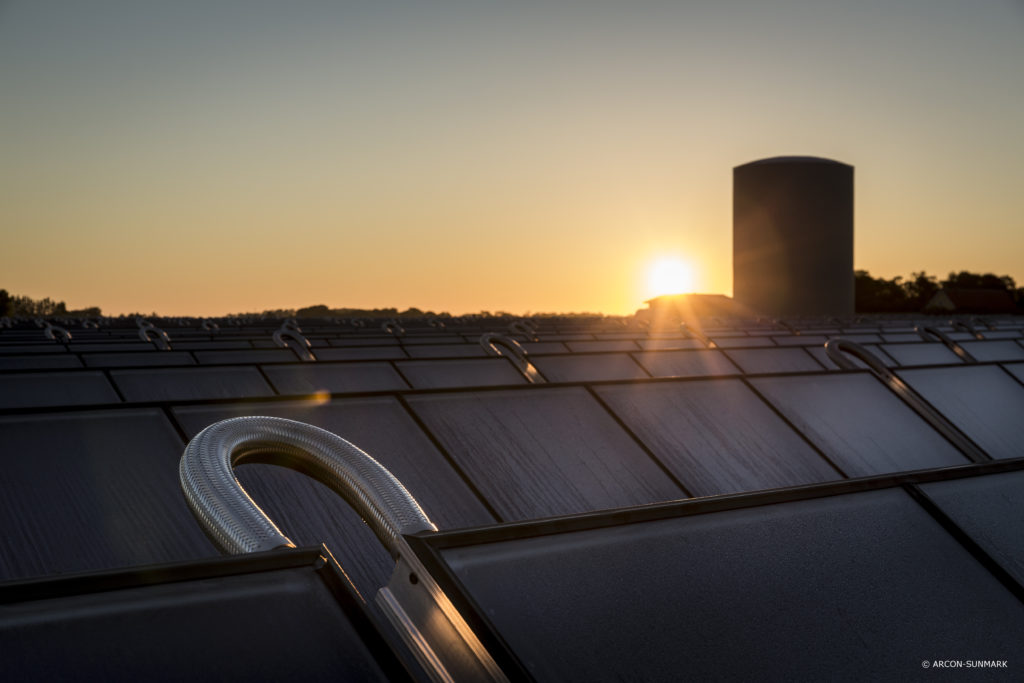
Exempt industry from TICGN, with solar thermal energy
August 14, 2019
In mainland France, the carbon tax is conveyed by the domestic consumption taxes applied to primary fossil fuels (TICPE / TICGN), through the Contribution Climat Énergie (CCE), also known as the "carbon component". As solar thermal energy is by nature renewable, it is not subject to the TIC and represents a real opportunity to limit its impact on industrial competitiveness, while reducing the environmental footprint of production sites.
Natural gas taxation: a major competitive challenge
Taxation of industrial fuels, in particular natural gas via the Taxe Intérieure de Consommation sur le Gaz Naturel (TICGN), is provided for in articles 265 and 266 of the French Customs Code.
TICGN is collected by gas suppliers from manufacturers who use gas as a fuel, in particular to heat or preheat fluids used in their production processes (water, air, steam, oil, raw products, etc.).
For 2019, the TICGN amounts to 8.45 EUR / MWh PCS. This is a significant amount, and can represent more than 50% of the price of the molecule for end consumers.
In addition to the regular rate, two reduced TICGN rates apply to certain profiles of large professional consumers:
- manufacturers subject to the European market for greenhouse gas quotas, who are also major energy consumers: 1.52 EUR / MWh PCS.
- industrial companies whose activities are exposed to the risk of carbon leakage and who are also major energy consumers: 1.60 EUR / MWh PCS.
In addition, certain industrial uses of gas are not subject to the TICGN. Here are a few examples: manufacturing processes for non-metallic mineral products, chemical reduction, metallurgical and electrolysis processes, etc.
An ambitious carbon trajectory with a pause
Introduced in 2014 with the Law on Energy Transition for Green Growth (LTECV), the Climate Energy Contribution puts a value on carbon emissions and finances the energy transition, thanks to its revenues.
Its introduction has sent a strong price signal to industry, encouraging it to shift its heat consumption choices towards renewable sources such as solar heat.
Today, the CEC amounts to 47.5 EUR / tCO2.
With the introduction of carbon valuation, the LTECV also introduced an upward trajectory for the price per tonne of carbon emitted. This trajectory offers manufacturers visibility on their energy costs and the possibility of generating increasing savings by opting for the supply of renewable heat.
In 2017, the current government's Climate Plan reinforced the increase in the carbon trajectory:
| Unit | 2013 | 2014 | 2015 | 2016 | 2017 | 2018 | 2019 | 2020 | 2021 | 2022 | 2030 | |
| CCE | EUR excl. tax / tCO2 | 0 | 7 | 14,50 | 22,00 | 30,50 | 44,60 | 55,00 | 65,40 | 75,80 | 86,20 | 100,00 |
| TICGN* | EUR excl. VAT / MWh HCV | 1,19 | 1,27 | 2,64 | 4,34 | 5,88 | 8,45 | 10,34 | 12,24 | 14,13 | 16,02 | 18,53 |
Trajectories for the Climate Energy Contribution and TICGN provided for in the LTECV and the Climate Plan
This trajectory has nevertheless been frozen by the government (at 47.5 EUR / tCO2 as planned by the LTECV for 2019), following industrial action at the end of 2018. The continuation or abandonment of carbon price increases is expected to be debated before the vote on the 2020 Finance Law.
Solar thermal energy, for industrial heat not subject to carbon tax
As it is not subject to the TICGN, solar thermal energy provides a hedge against future increases in carbon taxes, mitigating the risks associated with volatile gas markets, while being more environmentally virtuous.
The heat generated by solar thermal technologies is therefore an effective way of diversifying the energy mix of industrial companies.
For more information on ICT, visit the French customs portal.
* estimated amount of TICGN for the years 2019 to 2030
Photo credits: @Arcon-Sunmark